Bean seed fly
Delia platura and Delia florilega
Appearance
Seed flies resemble houseflies, are gray in color with dark, interrupted stripes on the dorsal shield. The male flies - recognizable by the eyes meeting at the vertex - have a row of comb-like bristles on the splints of their last pair of legs (= hind tibiae), which allows them to be distinguished from similar species.
The larvae have no legs and the head capsule is recurved so that the anterior end is pointed. Inside, mouthparts ("nail hooks") shine through in black. The posterior end appears as if cut off at an angle, and in the center of this "oval" lie the so-called posterior stigmas (often misinterpreted as eyes). The edge is occupied by about 15 small papillae, the shape of which can be used for species identification.
The eggs are white, pencil-shaped and 1 mm in size.
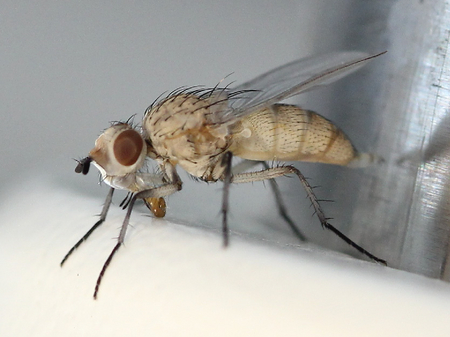
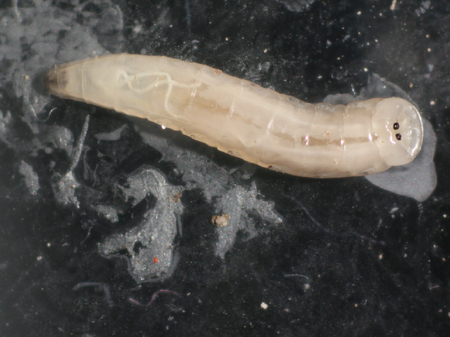
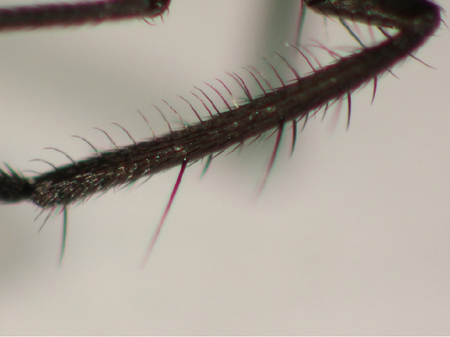
Biology
Seed flies belong to the fly family of flower flies(Anthomyiidae) and are assigned to the genus Delia sp. The seed flies are two closely related species with similar lifestyles, namely the more common Delia platura and the rarer Delia florilega. In addition to the name seed flies, the name bean seed flies is also common.
The flies are flower visitors and feed exclusively on nectar. The flies lay their 1 mm small, pencil-shaped, white eggs on germinating host plants. However, there are also known cases of eggs being laid on bare soil during ploughing. The flies are also attracted to unrotted plant matter, for example fields fertilised with solid manure or fields after grassland or intercropping are particularly attractive to the fly.
Fly larvae hatch from the eggs after a few days. The larvae feed partly on bacteria, which multiply strongly under unfavourable germination conditions for the host plants, and partly they actively penetrate plant tissue, which in turn favours bacterial growth. After passing through three larval stages (the time required for this depends on the temperature), the larvae leave their host plant and pupate in the surrounding soil at a depth of a few centimetres.
After a short pupal period, the adult flies hatch again, completing the cycle.
In this way, several generations of the fly are created, while damage is only done to young plants in spring. Overwintering finally takes place as a puparium (pupa) in the soil.
Damage symptoms
An infestation can initially be recognised externally by defects in the rows of emerging crops. Germinating host plants often lag behind in growth and show eroded roots, holes and borings in the root collar, stem and cotyledons. Mining tunnels can occur in bean cotyledons, and the stems of pumpkins are often completely hollowed out, in which large numbers of fly maggots can be found.
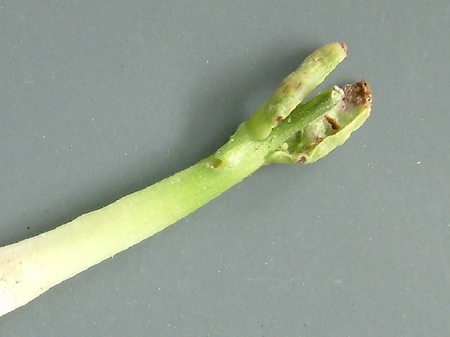
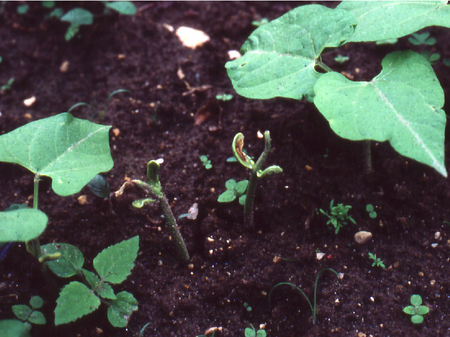
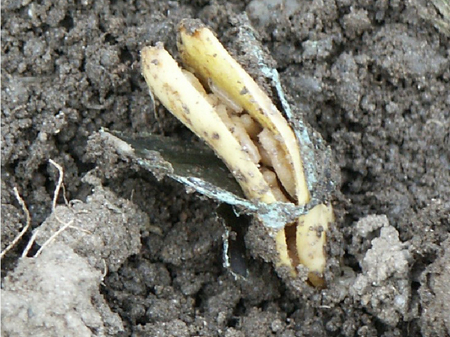
Propagation and transmission
Seed fly maggots are not primary plant pests, as their main role in the soil is to break down organic matter. However, since rot-dwelling microorganisms develop on seedlings under unfavorable germination conditions, these also provide an ideal food source for seed fly larvae.
Prevention and control
-
In general, early sowing is recommended and the previous year's infestation must be taken into account.
-
For catch crops, plants that freeze in winter should be selected.
-
Avoid incorporating poorly rotted plants or unripe compost into the soil (especially spinach). If incorporation is necessary, it should be carried out in cool weather when the flies are not active.
-
Do not apply solid manure shortly before sowing crops.
-
In the case of asparagus, the ridges should be covered with plastic sheeting.
-
Replant infested seedlings (especially common with cucumbers and pumpkins)
-
Plough up the infested crop and replant, preferably with a crop that does not require heat and is less susceptible.
Last updated: 06.02.2025
automatically translated